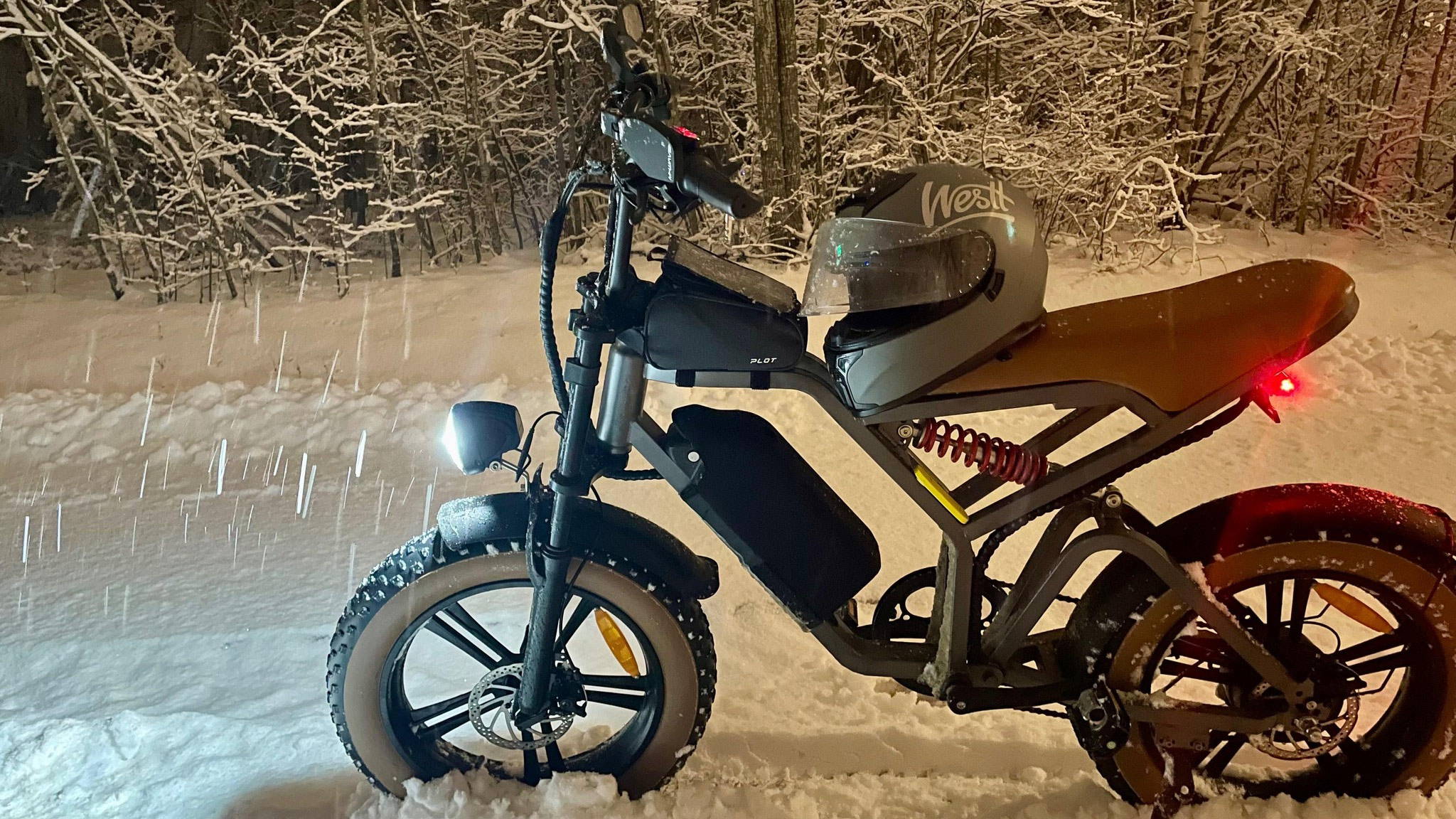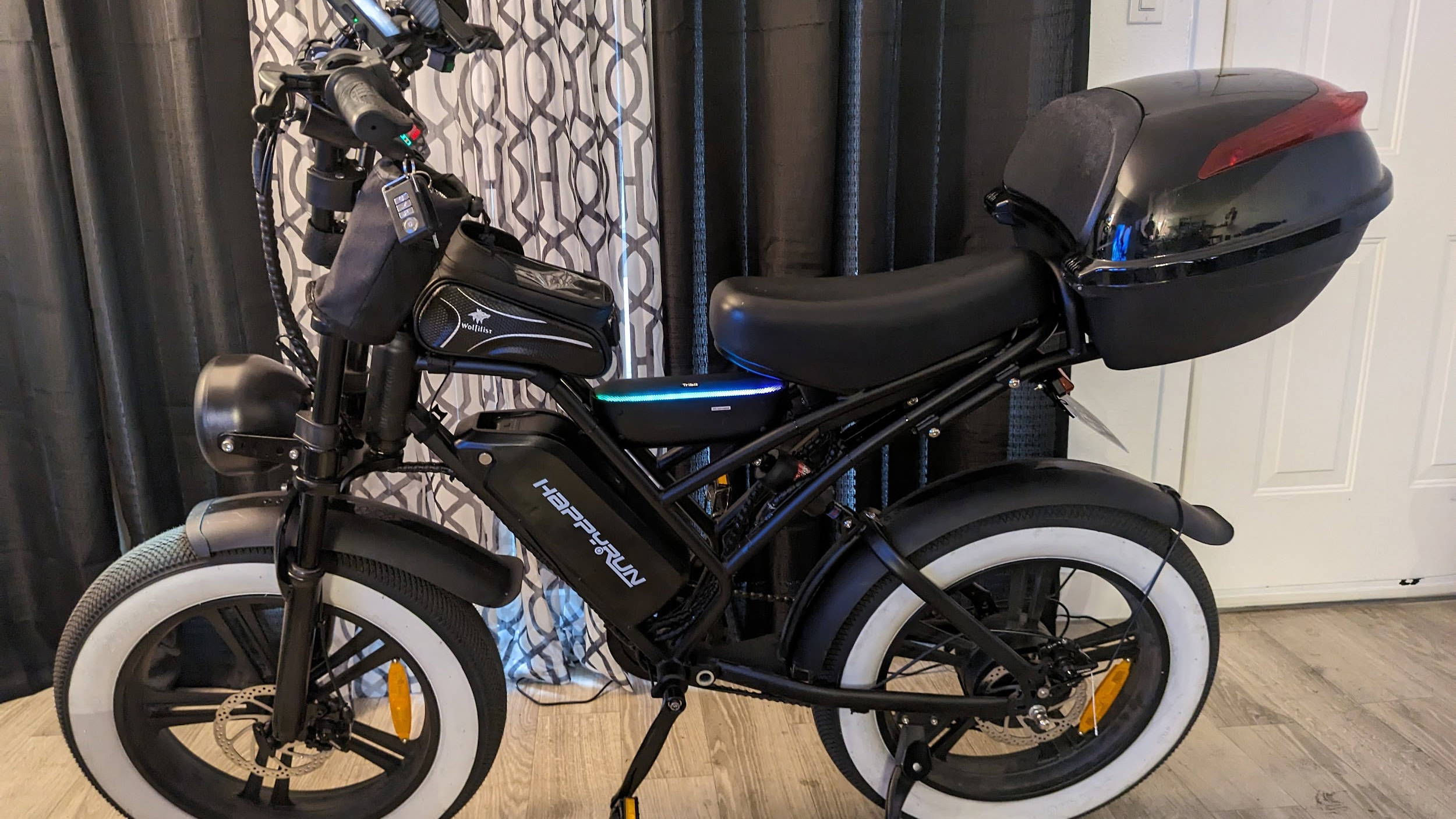
Biking in the Winter – What You Need To Know
E-bikes can be quite addicting, given their convenience and benefits, not just for yourself but also for the environment. This is why saying goodbye to your trusty companion in the winter season can be quite daunting. For most people, they simply put their bikes on rest during the winter season, others, follow a well-defined protocol that ensures they can still safely ride their e-bikes no matter the season. In this article, we will discuss general tips for the safety of your e-bike as well as yourself during the chilly winter weather.
Can You Ride Your E-Bike in Winter?
The short answer is, yes… but also no. To elaborate further, there are several factors to keep in mind when deciding to ride your e-bike during winter.
- Freezing temperatures put your battery at risk. Not only will it drain faster, but charging it in the wrong conditions can permanently damage it.
- Protect your e-bike from the elements and salt on the road that is used for de-icing.
- Planning ahead and riding on paths that are most favorable (less slippery, not blocked by ice, etc.).
- Taking precautions for personal safety against the cold.
Remember, most e-bikes can manage temperatures as low as -5°F, but the batteries cannot. So make sure you are taking extra precautions when it comes to the battery, and in general, take extra care of your e-bike during the winter.

Just like this, dress the electric bike battery in warm clothes
Tips for Bike Safety in Winter
Tip #1
With winter, comes snow, and with snow, comes slippery roads. These roads can be a major hazard if your e-bike tires have low traction, so the first thing you need to be able to ride your e-bike in winter is appropriate tires. The cold of winter can cause the rubber of your e-bike tires to become brittle, making them susceptible to damage if ridden for longer durations. Thickly studded tires are best for the winter season as they offer maximum traction and a good grip on slippery roads. You can even ride them over piles of snow in your path that have hardened.
Tip #2
Salt on the roads can be highly corrosive to your bike, so every time you head out, make sure to wipe your bike clean after coming back. Also, other forms of road-deicing treatments can also be highly caustic to the surface of your e-bike, so wiping your e-bike clean is a must. Wash the bike if possible, and take the motor off when doing so. You can use a garden sprayer with a mix of water and dish soap. Once cleaned, wipe it well so the water doesn’t get frozen on it.
Tip #3
While you are at it, remember to lubricate the chain every 100-150 miles.
Tip #4
Winter season causes the battery to drain rather quickly, so it is advised to keep an eye on the charge percentage. If it’s below 50%, it is not advised to take it on the long run, as anything less than 30% puts it at a risk of damage. Also, in this season, keep track of how long the battery is taking to charge and how quickly it runs out. This will indicate if your battery needs to be replaced.
Overall, just give your bike a complete and thorough check, including the electric motor, brakes, gears, etc. Everything needs to be in complete working order. As a precautionary measure, if possible, wrap the battery and motor in a neoprene cover to keep them protected and warm to a certain degree.
Tips for Personal Safety
Tip #1
When it comes to personal safety, the helmet takes precedence, but in the extreme cold of winter, your priority should be to keep yourself warm. So make sure you have sufficiently covered yourself; wear gloves, cover your head with a beanie (also cover the ears), and wrap a muffler around your neck and face so it is protected from the freezing gusts of air.
Tip #2
Then comes your helmet, which is obviously compulsory in any case. Make sure that the lights are working before heading out, as you might be running late and it gets dark rather quickly during the winter.
Explore Further: What is MIPS – Helmet technology that can save your life?
Tip #3
Moreover, consider adding fenders and mudflaps to your bike as they protect it from dirt, debris, and salt that can be very corrosive. Finally, every time you are heading out, check the tire pressure. During winter, the air compresses and the pressure can fall significantly.
Tip #4
To avoid running into a mishap, try to keep your tires a little overinflated just at the start of the winter. Once it’s freezing outside, the Schrader valve may not fit well as the rubber seal gets stiff.
Tips for Storing Your E-bike in Winter
Tip #1
The first course of action is to ensure your e-bike is always stored indoors and never left outside. The cold can not only affect the battery but the tires as well. This especially applies to the battery, which must be maintained between 55°F to 75°F, so storing it inside the house where it is warm is the best option (if the battery is non-removable, keep the whole bike inside the house). Otherwise, it may lose its charging capacity.

Storing your e-bike indoors ensures that your e-bike is protected from the cold.
Tip #2
Moreover, do not store your battery at a 100% charge during cold weather. Try and keep it between 30% to 70% charge. If it falls below that, it may become unrecoverable. So, the more you protect your e-bike battery, the better your chances of avoiding the expense of buying a new one.
Tip #3
Another thing you can do to keep your bike protected from the cold is to cover it with a bike cover that will keep it isolated from the cold.
Conclusion
Just because it's winter doesn’t mean you should give up your e-bike and walk everywhere. By using it correctly and as per the tips described above, you can still keep riding your bike. It’s all about practicing precautions and being careful, and you are good to go!































Leave a comment